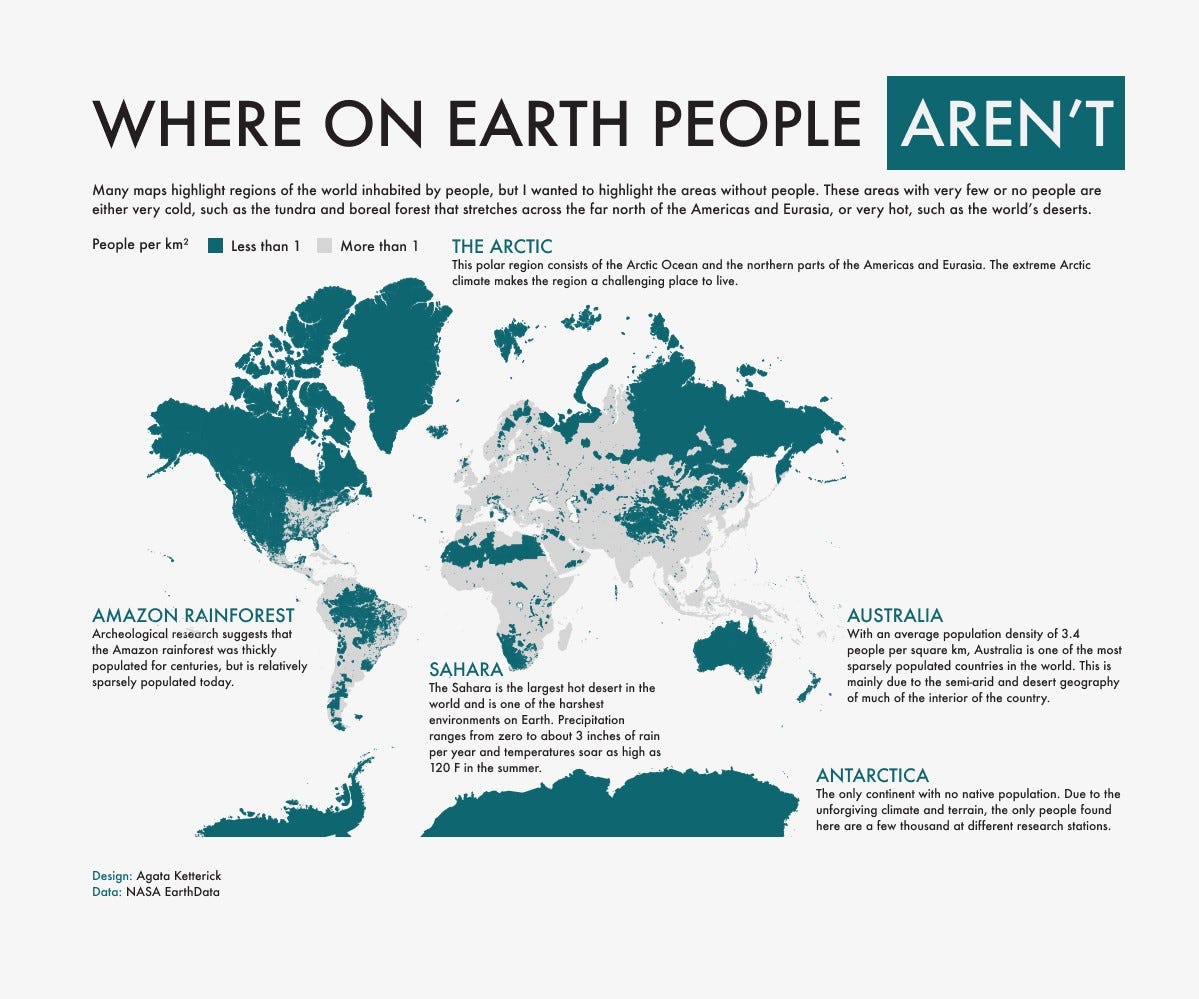Creator: Agata Ketterick
Insights
According to the Global Human Settlement Population Layer (GHSL), approximately 40% of the Earth's land surface has a human population density of less than 1 person per square kilometer. This includes deserts, mountains, rainforests, and polar regions. These environments are often difficult or impossible to live in due to extreme temperatures, lack of water, or other environmental hazards.
A study published in the journal Nature Sustainability found that the population density of human settlements in remote areas has declined by an average of 1% per year since 1960. This is likely due to a combination of factors, including climate change, economic hardship, and political instability.
The same study found that remote areas with low human population density are home to a disproportionate amount of the world's biodiversity. This is because these areas are often less disturbed by human activities, such as agriculture and development.





